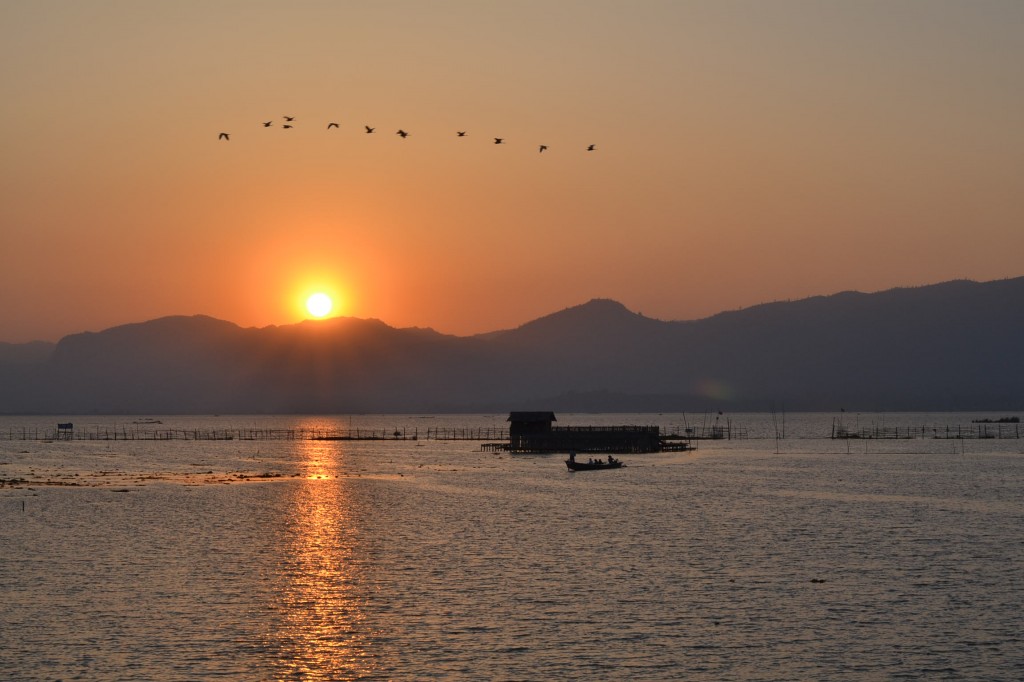Imagine living your life on water. Not on an island, but literally on water. Where your post office looks like this and the postman delivers your mail by boat.
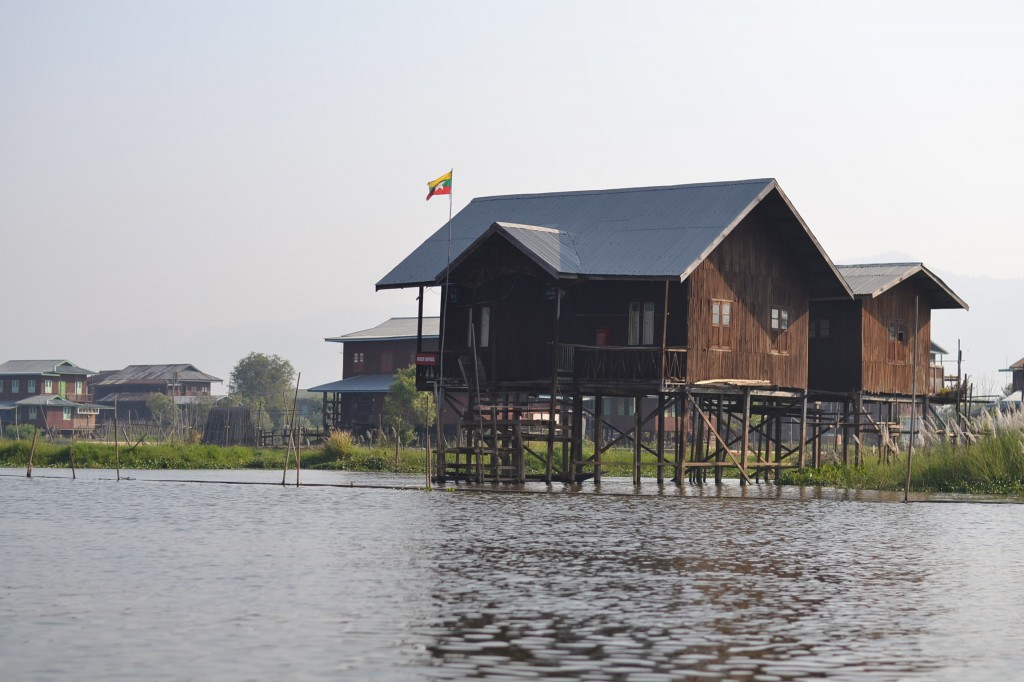
Where the school bus is a school boat that takes your kids to a floating playground. Where vegetables are grown in floating farms.
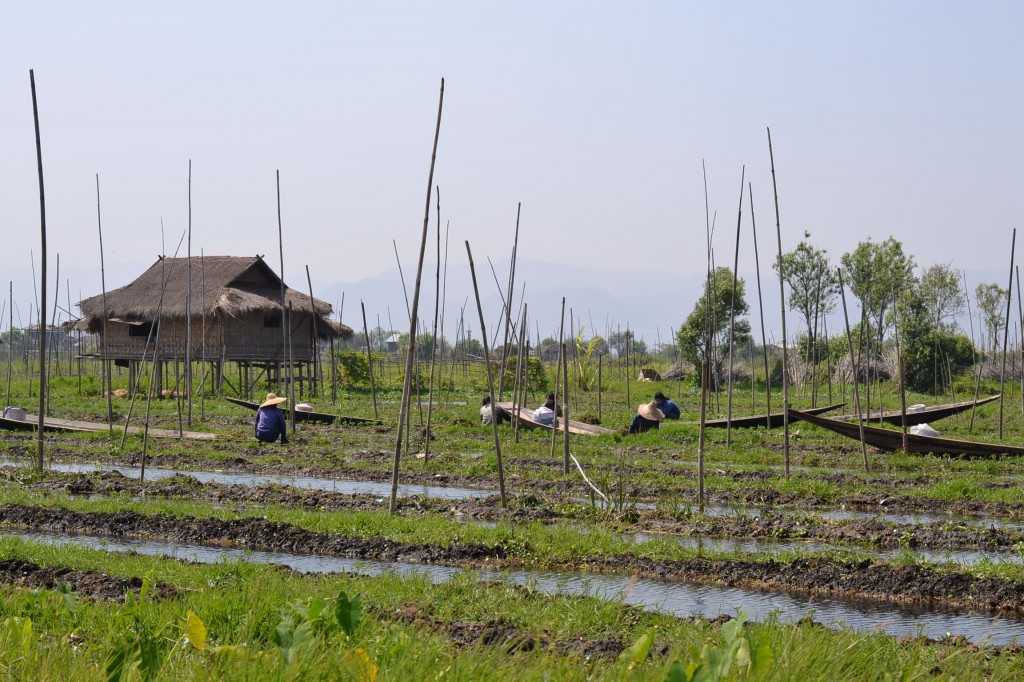
And delivered on boats.
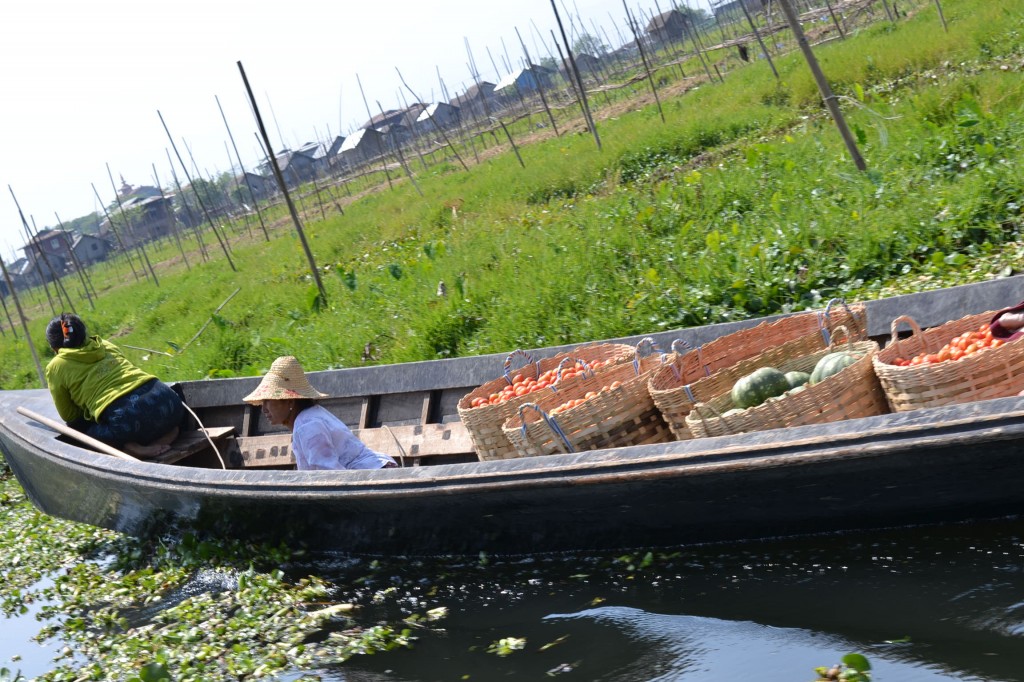
Where the rest of your shopping is done in a stilted store.
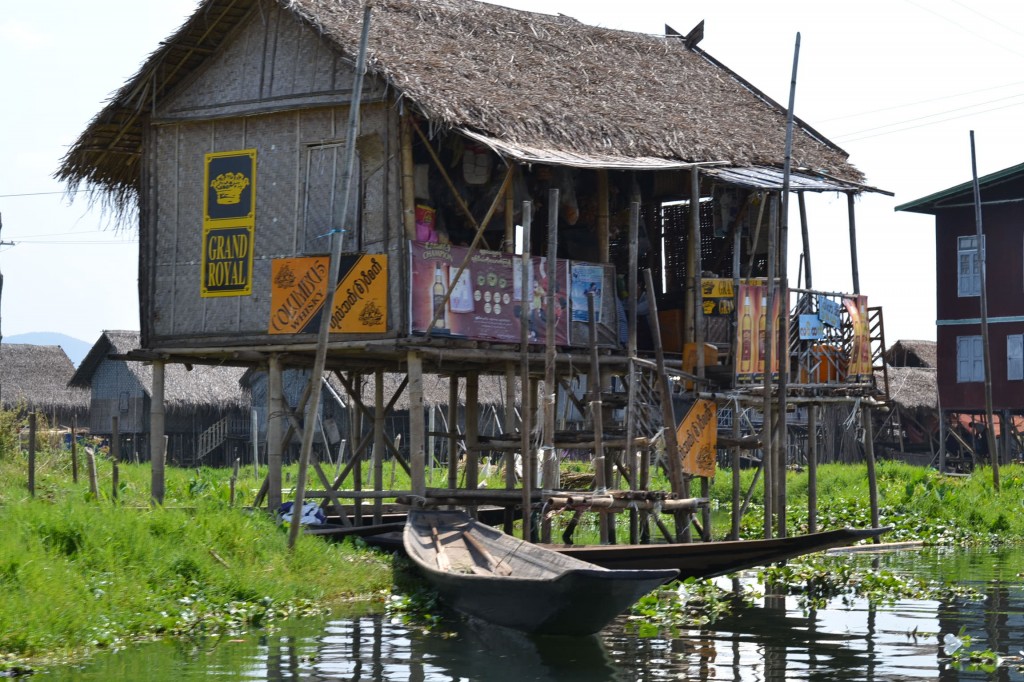
And this is the closest thing you see to a highway.
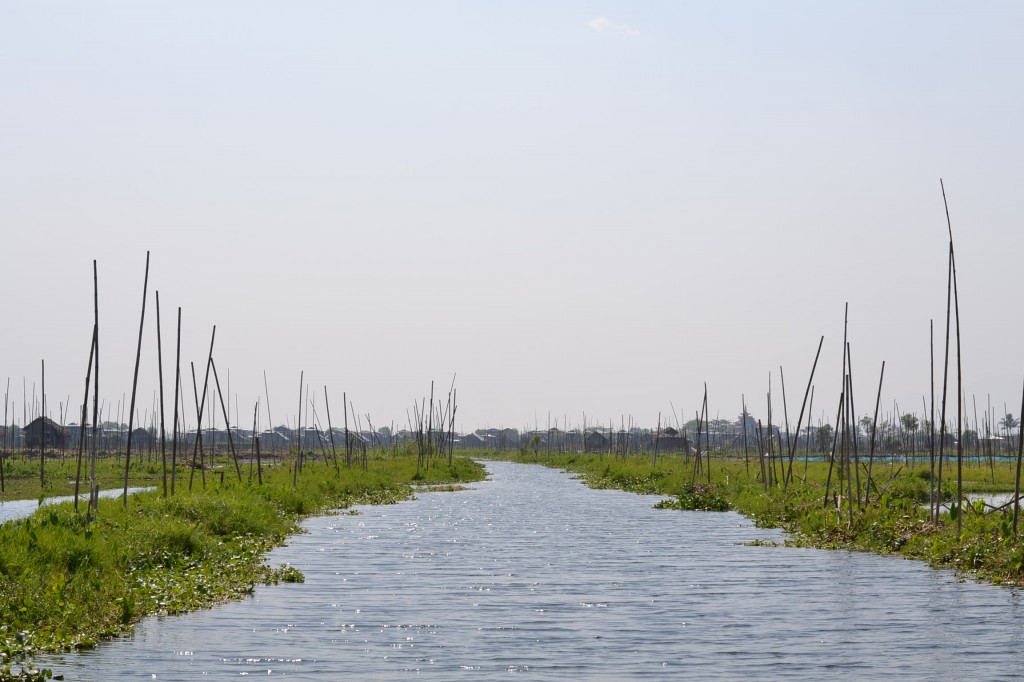
This is your neighborhood. If you need more land, you can dig it up from the lake bed and float it on bamboo rods. Want to relocate? Pick up the rods and move your land elsewhere.
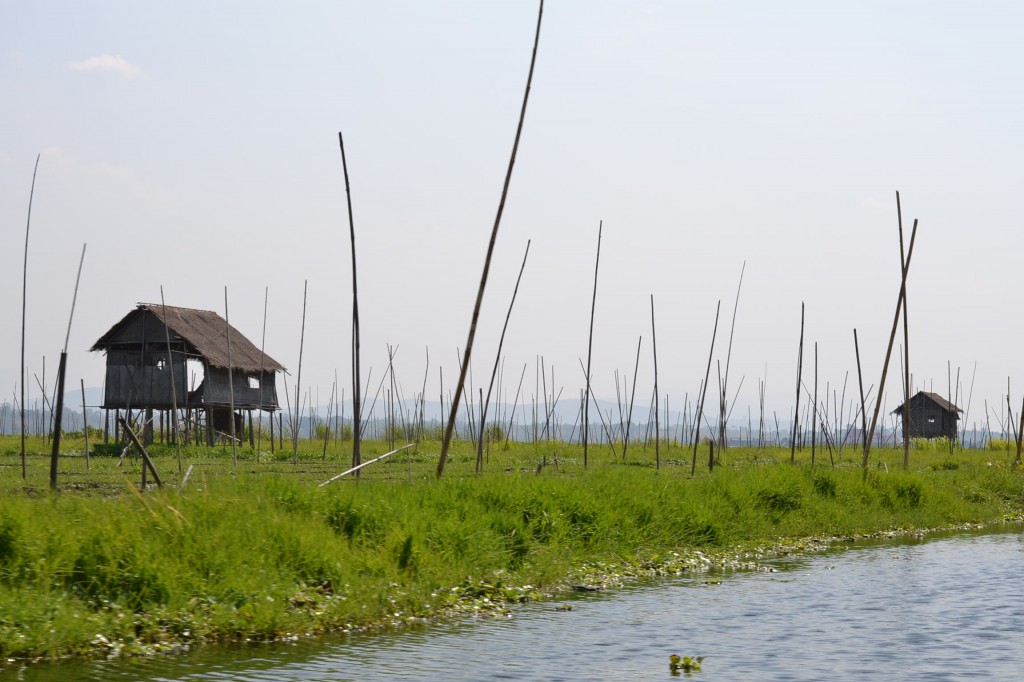
Such is the world on Inle Lake, a 45 square mile lake resting at an altitude of 3,000 feet in the middle of Myanmar. The lake and the surrounding areas is home to about 70,000 Intha people, several fish and snail species found no where else in the world, and tens of thousands of migratory seagulls. The Intha live simply in bamboo thatched huts and earn their keep mostly by fishing or farming. These communities and farms thrive on man made floating islands.
The lake is shallow and the water fertile, with an average depth of seven feet. The combination creates an ideal environment for growing vegetables such as tomatoes. The water is rich with fish and harvesting them amid dense reeds is a challenge the Intha have mastered. To give them the elevation required to see what lies beneath the water surface, the fisherman use a technique of anchoring themselves to the stern with one leg and rowing with the other. It’s a workout if I’ve ever seen one. I kept expecting a fisherman to lose balance and fall in, but that never materialized. I asked a few people, but no one admitted to ever seeing a rower fall into the lake.
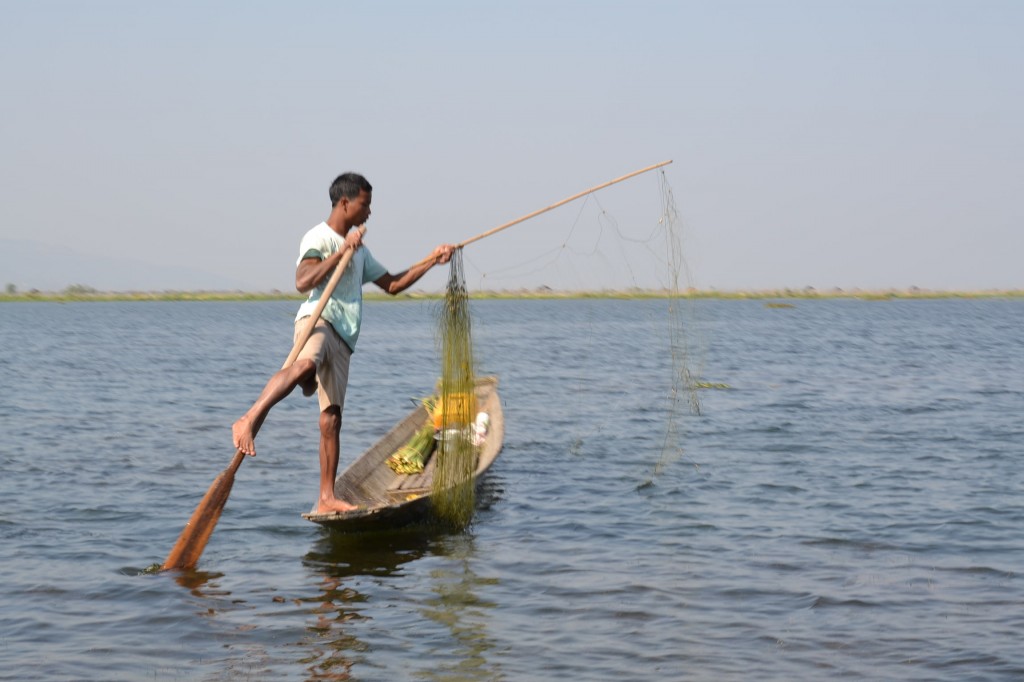
We were lucky to be in Inle during the seagull migration. We found out quickly that if we tossed up some bread, the gulls swoop down in droves and snatch it mid air. This was fun for a few seconds until we realized that we were running out of bread but the gulls weren’t running out of appetite. With visions from Hitchcock’s The Birds flashing before my eyes yelled at our boatman to go faster!
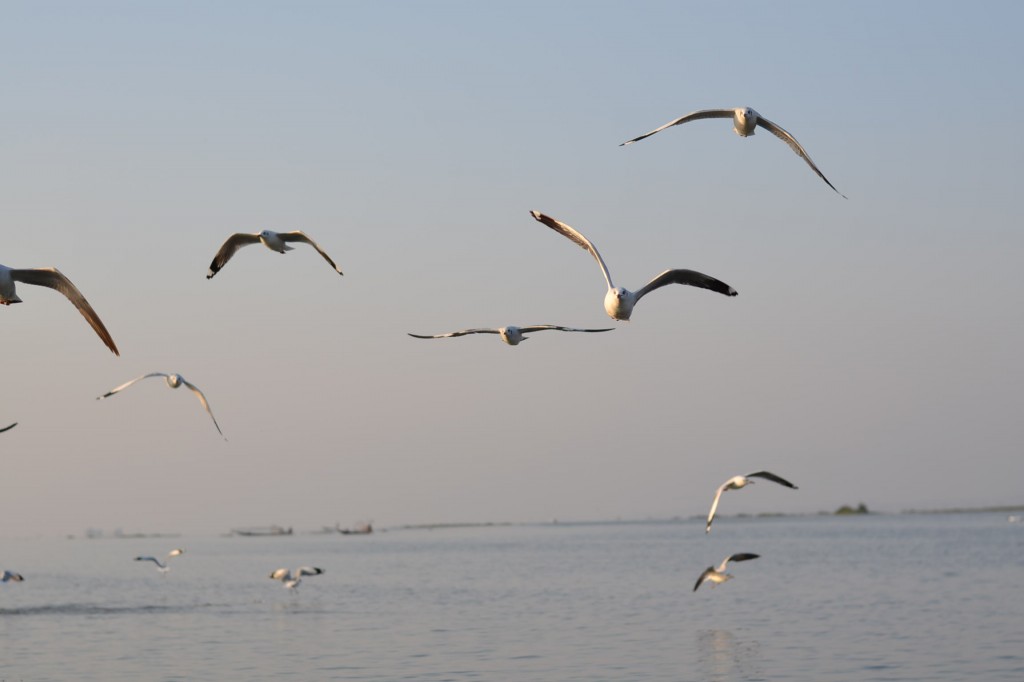
Inle Lake is still exhibits much of its unique ecosystem and culture. However, it is facing severe environmental challenges. The water area has decreased by about 30% over the past 70 years. Farmers have taken to using synthetic fertilizers and chemicals, which in turn affects the water quality and fish. What once used to be safe drinking water is now too contaminated even for cooking. Additionally, increased tourism means more motorboats, which also has a devastating impact on the area.
We try to be aware of our environmental impact wherever we travel. For example, in Kottayam, our garbage didn’t go far from home. By contrast, we found Chiang Mai making huge efforts in recycling and pollution control. As lovely as a destination may be, I do think that we as visitors have to be conscious on the role we play to ensure that it remains so. After a half day of being taken around Inle Lake on a motorized boat, we decided to watch the lake from our floating hotel for the rest of our visit. It wasn’t much in the grand scheme of things, but we’re trying to be more responsible travelers where we can.
Life on Inle fascinated me and I couldn’t stop asking questions such as “How do you walk the dog?” to every local who spoke English. We’ll just have to come back and spend more time on the water to find out.
